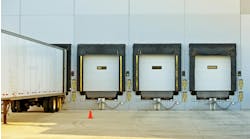When it comes to truck repair, fleets may be in for a double whammy of bad news. The recent Decisiv/TMC North American Service Event Benchmark Report showed that for the last quarter of 2021, labor costs increased 14.2% year-over-year. On top of that, the cost of parts increased 8.8% year over year.
Supply chain issues mostly are to blame for the increased price of parts. Given labor demands, higher wages for truck technicians explains the increase in labor costs.
See also: Rising parts costs make strategic sourcing critical
On top of that, fleets are running their existing assets longer because of the unavailability of new trucks. And we all know that means more maintenance and repairs to keep older assets on the road moving freight.
While the cost increases may be outside fleet owners’ control, there are seven actions they can take to make the best of a bad situation:
- Calculate the cost for truck maintenance and repair operations, including parts used to complete the service. Data from VMRS codes or an in-house tracking system gives great insight into problem areas. Comparing these expenses with telematics data may indicate fast-acceleration and hard-braking events. These driver-related behaviors can increase costs, so use the data to help inform how to best coach drivers.
- Gather trend data, which can provide insight into the performance and durability of specific brands. Given the particular duty cycles and operating conditions of your tractors and trailers, some brands may prove to be more durable for your fleet. Keep in mind the total cost of operation—not just the initial purchase price—when selecting replacement parts.
- Review maintenance and repair costs on an asset-by-asset basis. Those assets that consume the largest portion of your maintenance and repair budgets should be retired first as you add new vehicles to your fleet.
- Comply with all recommended preventive maintenance. In these days of stretched-out life cycles, taking proper care of assets is critical. Cutting corners in this area is not an option, as a missed service can cost thousands of dollars—not to mention customer goodwill—if a truck breaks down because it missed a scheduled maintenance service.
- Adapt revised maintenance schedules based on the new reality of your fleet. If a business must run assets past the typical trade cycles because of supply chain issues, adjust maintenance scheduling. Because assets are older, account for the fact that they may need more attention to stay in good running shape.
- Consider a good-better-best strategy for your replacement parts. In some instances, it might be okay to select a less expensive part, especially if it is for a specific truck to last for a short period of time until its replacement arrives.
- Work with outside service providers to help gain control over maintenance and repair costs. They typically buy higher volumes of parts and can pass those savings on to businesses ordering from them. They also help navigating issues of hiring, training, and retaining technicians.
No one knows how long high parts and labor costs will last. Organizations taking these actions today can better understand maintenance and repair spending. With better insight and control over this budget, fleet businesses can adjust and mitigate the price spikes.
Jane Clark focuses on managing the member services operation at NationaLease as vice president of member services. She works to strengthen member relationships, reduce member costs, and improve collaboration within the NationaLease supporting groups.



